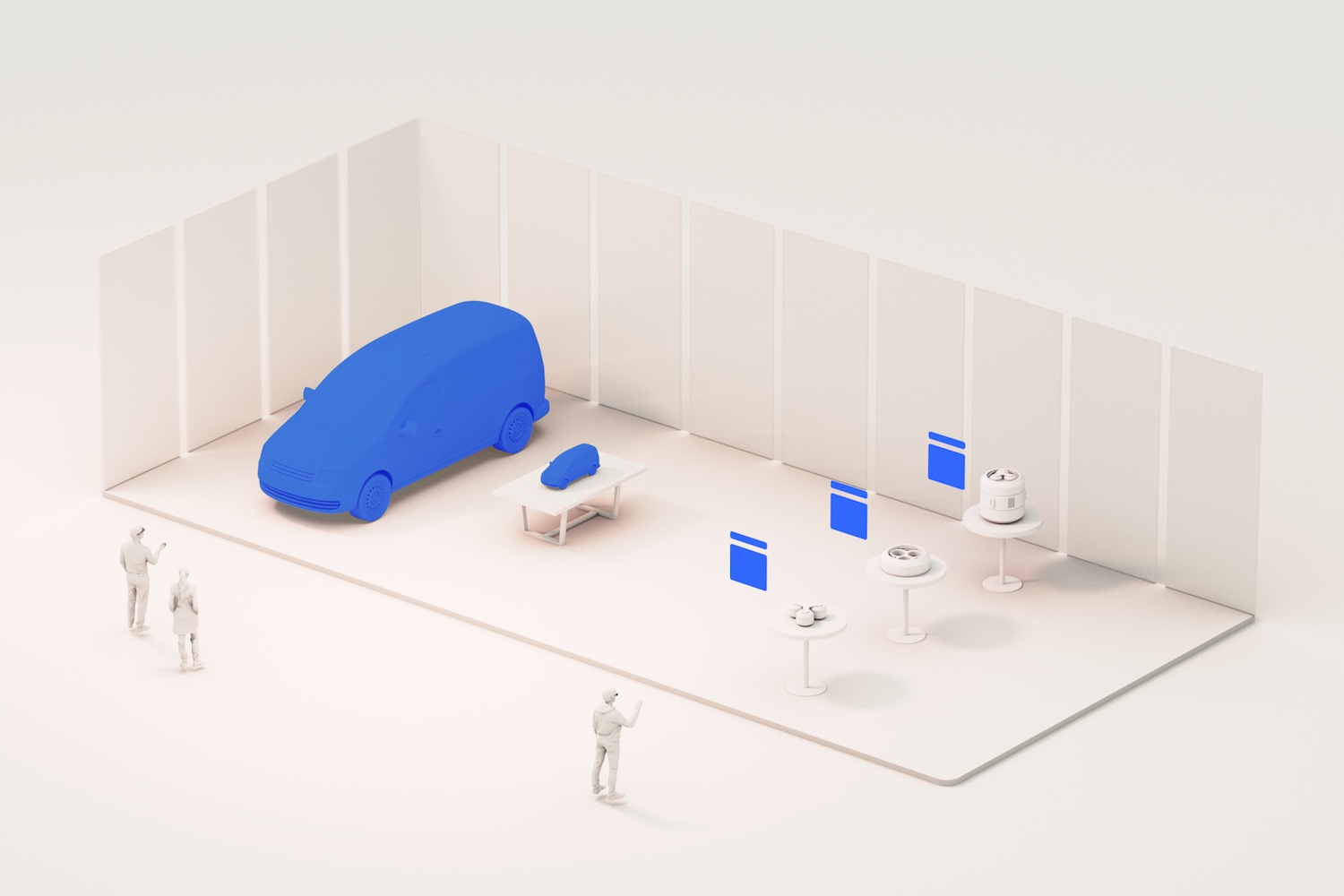At its core, Augmented Reality (AR) is about more than just technology — it’s about human connection and being present in the world around us. The potential of AR is vast, with the power to make everyday interactions more meaningful, work more productive, and life more connected.
Designing for AR devices opens the door to possibilities beyond the limits of a flat screen. It brings a third dimension into play, where we can spatialize, or place content in ways that match our physical world.
This expanded environment, however exciting, must be met with intention and restraint.
A third dimension enables new and exciting ways for people to connect and interact with information, but it’s crucial that AR design for 3D is executed with intention and care. AR’s purpose is to seamlessly integrate into people’s work and daily tasks and lessen their cognitive load.
Here's how Magic Leap spatializes with purpose.
Depth and Scale Matter
Depth provides context and communicates priorities without overwhelming the user’s immediate view. For example, placing content deeper in the field of view (FOV) can signal an approaching decision or action. Likewise, information in the foreground can guide the user’s focus to something urgent.

Scale adds another layer of meaning, helping users evaluate content in the context of their surroundings.
How we scale objects must depend on the use case. For example, while designing a car, a team might work in table scale, inspecting a 3D model from a birds-eye view. But the same car model might later be scaled up to actual size allowing prospective customers in a showroom to visualize what it would feel like to be inside it.
In shared experiences with multiple users, dynamic scaling ensures that everyone can see and interact with the content, regardless of their perspective.
Define Content Behavior
Spatializing means we need to define where the content lives and how it behaves. For example, should content follow the user? Stay in one place? Attach to something that moves? AR introduces a new suite of content behaviors that are not available in virtual reality (VR) or flat screens.
We base these decisions on the user’s primary task and how they will move in their physical environment.

We break down content behavior into four types:
- Head-relative content follows head movement and positioning. We use this for persistent indicators or content that must appear in a user’s FOV. Do not use this behavior for large content as it obstructs physical-world visibility.
- Body-relative content follows body movement and positioning. This behavior is ideal for content that needs to be easily accessible, but doesn’t need immediate attention.
- World-relative content is attached to fixed locations. We use this for content that is contextual to a location or when the user is stationary.
- Object-relative content is for content attached to moveable objects and follows physical items. By selecting the right behavior for each element, we support natural movements and intuitive interactions.
Nudge with Nuance
AR is about keeping people connected to the physical world.
We believe clarity comes with restraint, so we only nudge, or gently prompt users to take action, with the most essential information. On two-dimensional screens like websites, the size and placement of a button are deliberately designed to guide attention and prompt clicks, but with AR, we have to use even more nuanced tools and techniques to subtly direct people’s awareness and encourage action.
We never want to distract, overwhelm, or restrict a user’s agency, which are typically the result of excessive elements, like too much content on a screen.
Our tip? Subtlety goes a long way. A gentle line on the floor can guide a path. A soft chime behind the user can prompt them to turn. Cues should feel like a natural part of the environment rather than a departure. When done well, spatializing enhances comfort and usability.
Look and Listen
In many AR interfaces, sound design often takes a backseat to visuals, but we believe sound should hold equal weight and consideration as visual elements.
Why? Audio has the ability to both direct attention and provide feedback more intuitively than visuals alone.
For example, spatial sound adds directionality and is not tied to the user’s view. If something happens to your left, the sound comes from that direction, helping you discover it naturally. Anchored sounds that also increase in volume as you approach them keep you grounded by reinforcing real-world rules.
Audio can also provide confirmation or feedback without interrupting any existing user flows. It can be a powerful tool for guiding attention, creating immersion, and reinforcing meaning while keeping the user visually grounded.
Designing for Real Life
Spatial design isn’t about being flashy, it’s about understanding how people move, focus, and make decisions in the physical world.
When AR interfaces are designed with care and all dimensions in mind, they are not only more useful, but more human.